Introduction
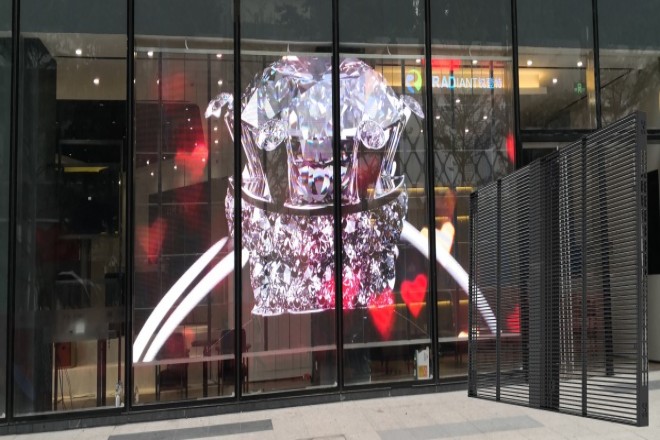
Have you ever seen a transparent LED display? Perhaps you have passed by it in a bustling commercial district or next to the glass curtain wall of a high-end building.
Transparent LED display, this innovative technology, is quietly integrated into our daily lives and has become a beautiful landscape in modern cities.
It is designed for glass walls and has won wide attention for its unique transparency and visual expression. But the question is, are all glass walls suitable for installing transparent LED displays? Let’s go deep into the article and find the answer.
1. Types and characteristics of transparent LED display
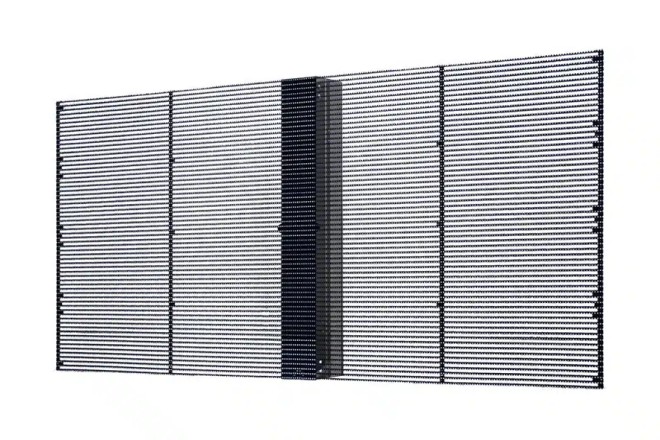
1). Transparent LED display
The transparent LED display is like a “magic screen” that is both transparent and can display content. It not only maintains a high degree of transparency, allowing you to clearly see the scene behind the screen but also plays beautiful videos and images, which is more suitable for indoor use.
- Application examples:
In shopping malls, transparent LED displays can be used to display fashion items and promotional information without hindering customers from enjoying the street view outside the store.
At concerts or concerts, it can be used as a stage background to create a visual effect that complements the musical atmosphere.
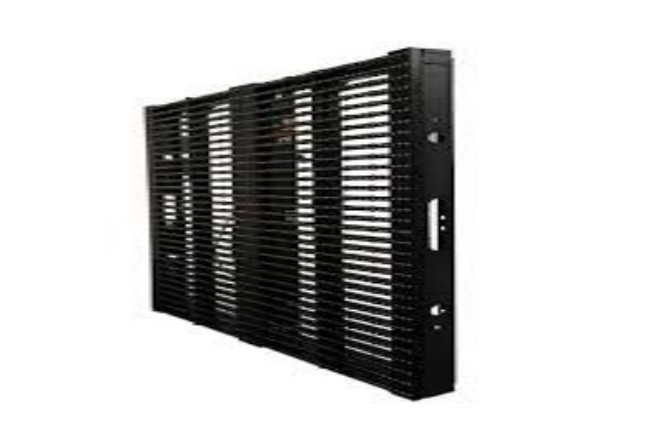
- 2). Grille LED display
The design of the grille LED display is reminiscent of a honeycomb or pixel grid. It has both artistic beauty and ensures the circulation of air and light. Its high brightness and dust and water resistance make it very suitable for outdoor environments.
- Application examples:
On large outdoor billboards, the grille LED display can clearly display advertising content while reducing the obstruction of sight.
At outdoor concerts or festivals, it can be used as a large screen on-site to broadcast the progress of the event and audience interaction in real-time.
3). Other creative transparent LED display products
Night-style transparent LED display: This display can be seamlessly integrated with the glass curtain wall of the building. After lighting up at night, it presents a colorful visual effect and enhances the fashion sense of the building.
Folding transparent LED display: This display is easy to carry and store and is very suitable for outdoor activities or temporary exhibitions.
These transparent LED display products are gradually changing our visual experience and lifestyle with their unique design and a wide range of application scenarios. Whether it is commercial display, event performance, or daily life, they can find a suitable place for themselves and play the greatest value.
2. What are the conditions for the installation of a transparent LED display?
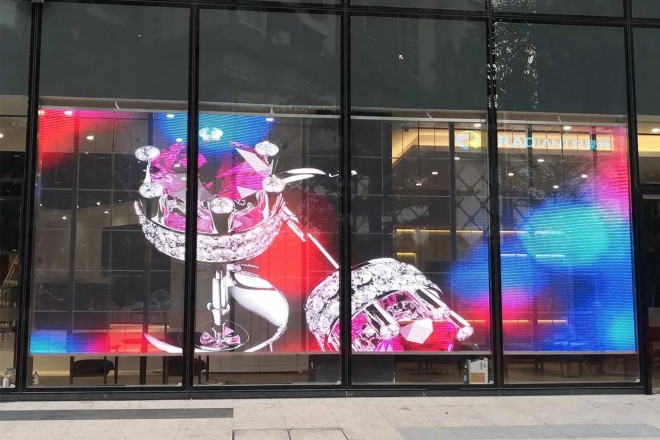
1). Requirements for glass
- Load-bearing capacity:
First of all, the glass must be strong enough to bear the weight of the transparent LED display and its accessories.
Imagine if the glass is not strong enough, the display will fall down one day, which would be a tragedy. Therefore, you must check the load-bearing capacity of the glass before installation.
- Flatness and thickness:
The glass must be flat and not uneven; otherwise, the display effect will be greatly reduced after the display is installed.
Moreover, the thickness of the glass must be moderate. If it is too thin, it may not be able to bear the weight of the display, and if it is too thick, it may affect the display effect and installation difficulty.
- Light transmittance:
For a transparent LED display, light transmittance is the key. If the glass has poor light transmittance, the brightness of the display will be affected, and it will look dim. Therefore, you have to choose a glass with good light transmittance.
- Safety:
Safety is always the first priority. Therefore, the glass must be non-toxic, harmless, and non-radioactive and must be specially treated to prevent injury when it breaks. In this way, it can be used with confidence.
2). For other requirements:
Installation location: Find a suitable place to install it; don’t block other people’s sight, and don’t expose the display to harsh environments.
Power supply and power supply: The power supply must be stable and sufficient. Otherwise, it will be embarrassing if the display can’t light up.
Professional installation: It is best to find a professional installation team to install it. They have experience and know how to install it in the safest way.
So, not all glass can be installed with transparent LED displays. If you want to install it, you have to choose the glass carefully and find a suitable installation team to help you.
In this way, you can ensure that the display is installed stably, used for a long time, and can be seen clearly!
3. Evaluation of whether the place with glass is suitable for installing transparent LED displays
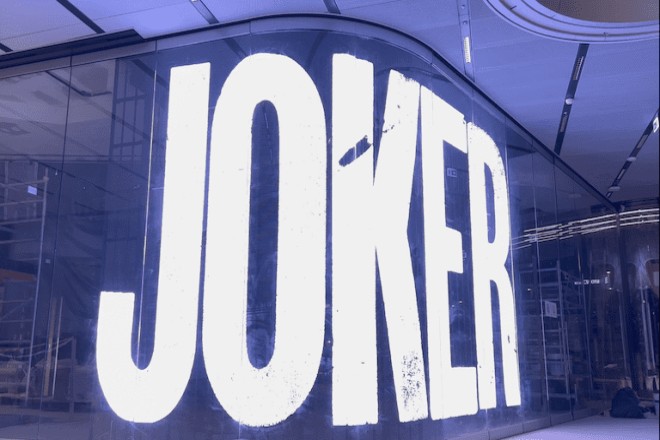
When planning to install transparent LED displays in glass areas, in order to ensure the smooth installation process and the continuous and efficient operation of the display, you need to carefully consider the following core factors.
1). Structural stability and load-bearing analysis
Load-bearing and material selection: The first step is to conduct a comprehensive assessment of the load-bearing capacity of the glass and its supporting structure.
Because the transparent LED display and its accessories also have a certain weight, it is crucial to choose a glass material that can withstand this weight.
In this scenario, tempered glass is usually a more ideal choice due to its excellent strength and load-bearing capacity.
- Thickness and type considerations:
Consider the type of glass, such as tempered, laminated, etc., and the thickness of the glass will directly affect its load-bearing characteristics.
Therefore, when choosing glass, be sure to carefully choose the most suitable glass type and thickness based on the weight, size, and expected service life of the display.
- Installation method and safety assessment:
Determine the installation method of the display, such as hanging, embedding, etc., and then further evaluate the firmness of its connectors to ensure a stable connection between the display and the glass, while avoiding unnecessary damage to the glass.
2). Environmental adaptability and protective measures
- Environmental factor assessment:
Conduct a detailed assessment of the external environmental factors of the installation location, such as temperature, humidity, wind, etc.
These factors may have a direct impact on the performance and life of the display. For harsh environments that may be encountered, such as high temperature, humidity or dust, corresponding protective measures need to be formulated.
- Waterproof and dustproof measures:
If the installation location may be attacked by rain or dust, the display needs to be equipped with effective waterproof and dustproof facilities to ensure its normal operation in harsh environments.
- Heat dissipation and ventilation design:
Considering that the display screen will release heat during operation, it is necessary to ensure that the installation location has good ventilation conditions for effective heat dissipation. If necessary, auxiliary equipment such as cooling fans or heat sinks can be added.
3). Maintenance and upgrade convenience
- Maintenance channel planning:
When installing the display screen, sufficient maintenance space must be reserved to ensure that maintenance personnel can easily approach and operate the display screen. This includes but is not limited to designing easy-to-remove panels, providing necessary maintenance tools, and planning reasonable maintenance routes.
Conclusion
In summary, transparent LED displays have won the favor of the market with their many highlights, but not all glass scenes can be perfectly adapted.
Comprehensive installation condition assessment and the selection of professional construction teams are the keys to ensuring the success of the project.
Finally, if you want to know more about LED displays, please get in touch with us.
